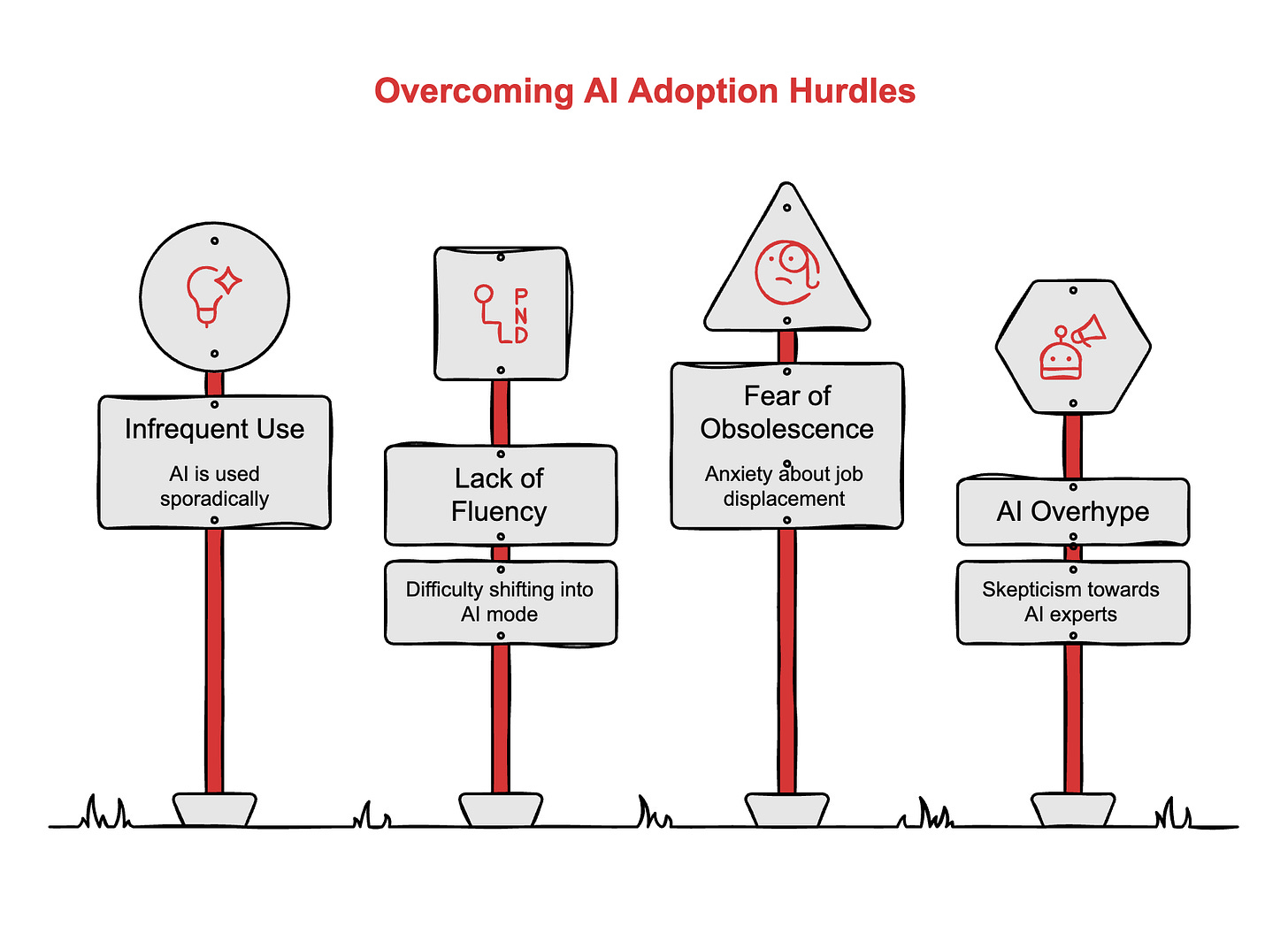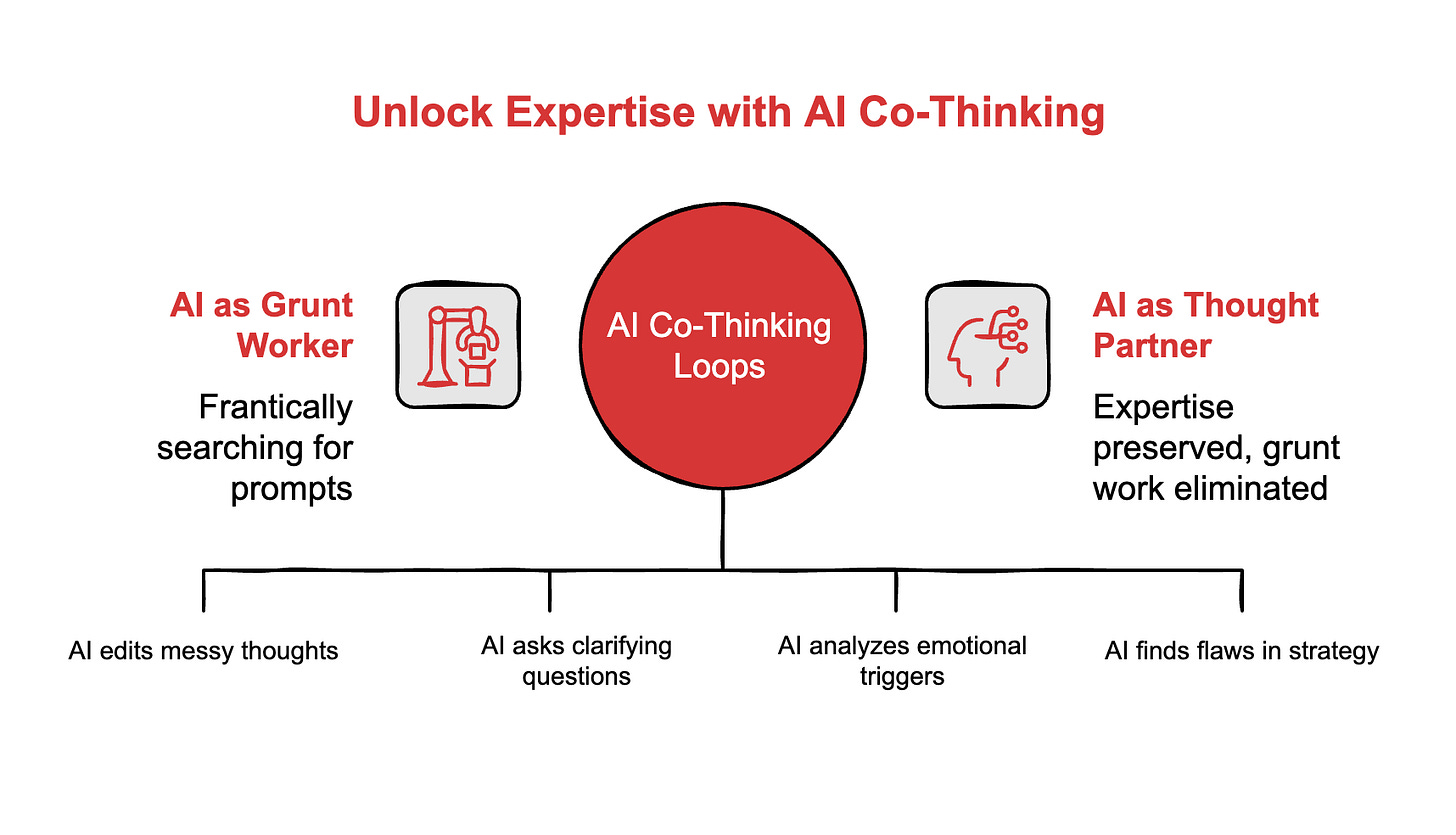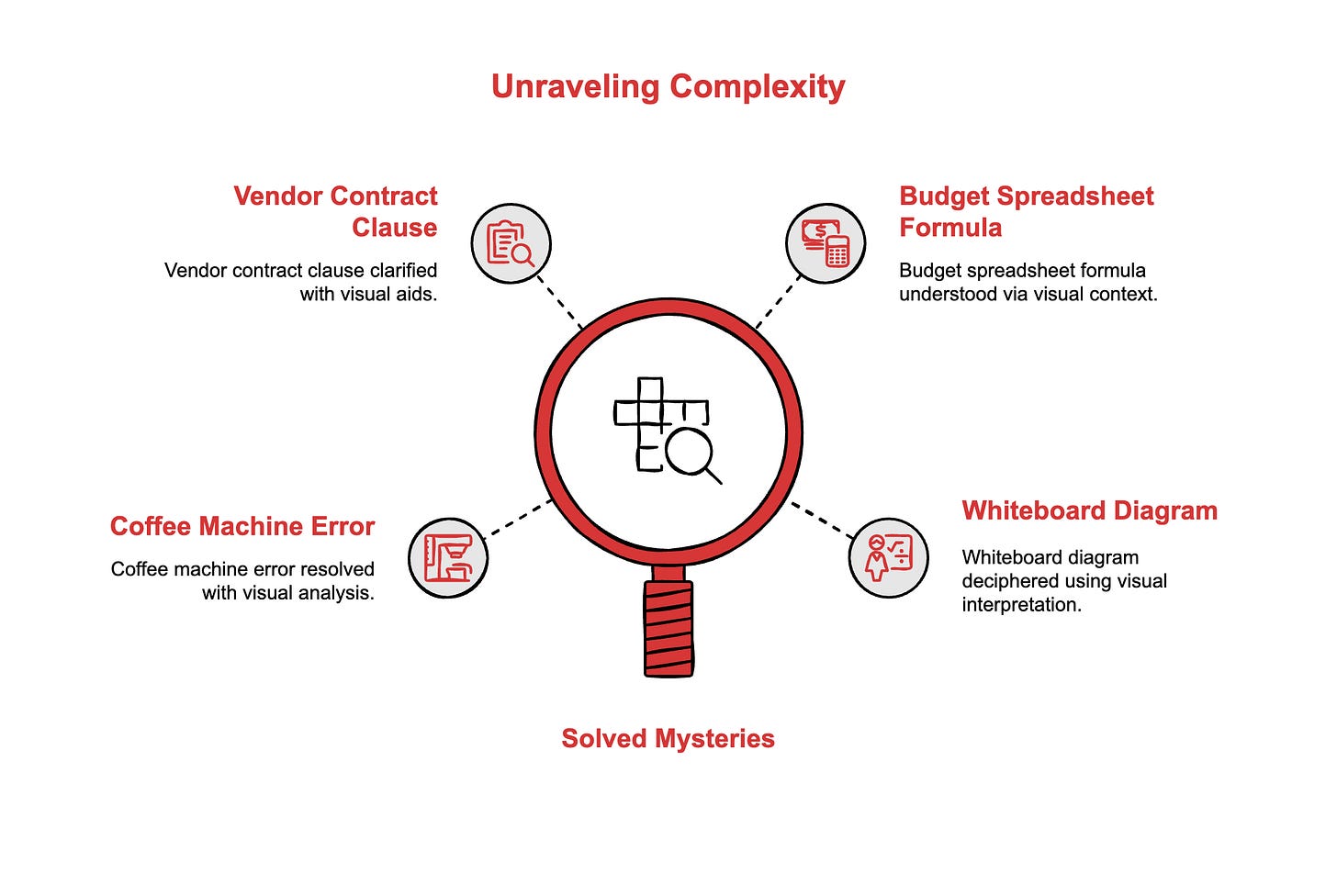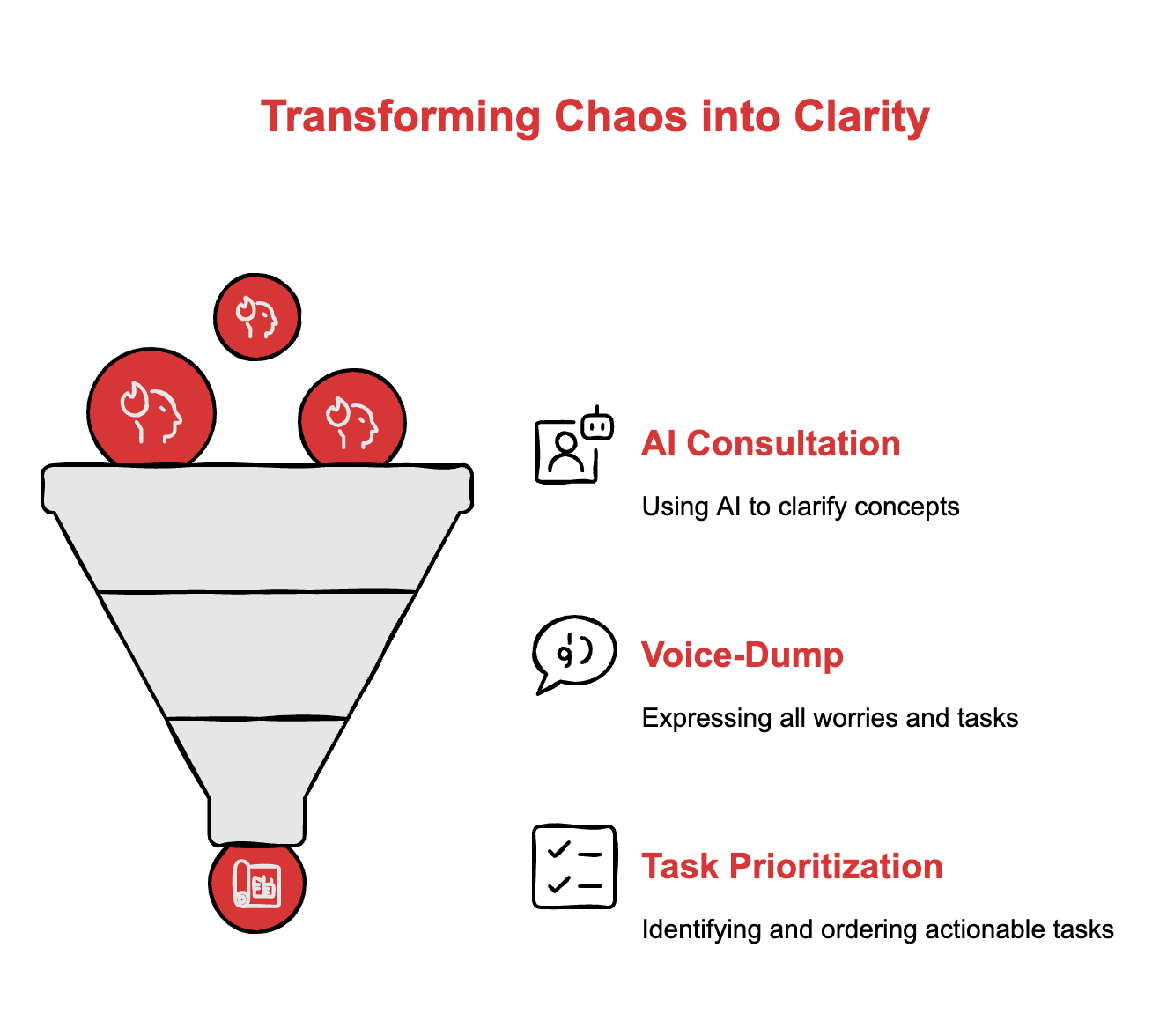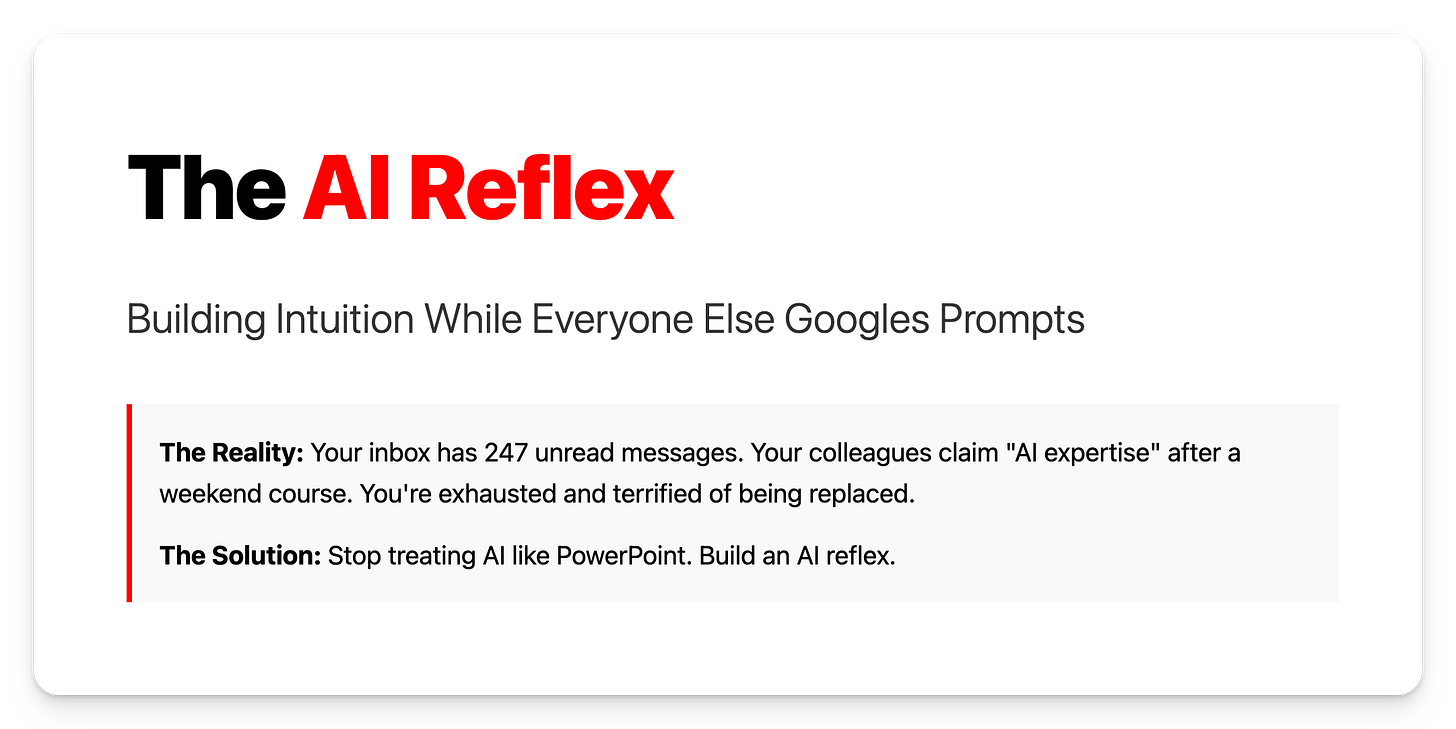The AI Reflex: Building Intuition While Everyone Else Googles Prompt Templates
Stop collecting ChatGPT tips. Start building the instinct that keeps you employed
Get the presentation here
Hey Adopter,
Your inbox has 247 unread messages. Brad from strategy just scheduled another “AI strategy session.” Your LinkedIn feed is full of people claiming they’re “AI experts” after a weekend course.
Meanwhile, you’re exhausted, behind on everything, and secretly terrified that one morning there’ll be an email about “exciting organizational changes” with your name on it.
People who’ll survive the next round of layoffs will be the ones who stopped treating AI like PowerPoint. A tool you pull out for special occasions. They built something else. An AI reflex.
Most people treat AI as a tool, something gathering dust in the digital shed until they need heavy lifting. “Write this email.” “Generate this report.” Open app. Close app. Forget everything.
Yes, knowing the right prompts for the right situation or at least a structure in which you should prompt them. But I’m not trying to turn you into some sort of AI sommelier. It’s about how fast you shift into AI mode when you hit any wall.
Can’t find the right word? AI mode.
Report feels off? AI mode.
Meeting going sideways? AI mode.
Trying to figure out how to advance your career but don’t know where to start? You guessed it - AI MODE!
Level 1: Friction removal (kill the barriers before they kill your career)
You can’t build a reflex if there’s friction. AI needs to be as accessible as your own thoughts.
The “always open” rule
Never close the tab. Pin it. Prime monitor real estate. Set up a hotkey that makes it faster to reach AI than to open Slack. If it takes more than two seconds to start a conversation, you’re already losing to Sarah from product who has it on speed dial.
Voice mode default (yes, it’s weird, do it anyway)
Typing is for final output. Voice is for thinking. I know, talking to your computer makes you look unhinged. Karen from accounting will judge you. But here’s what happens when you push through: complex thoughts that would take ten minutes to type pour out in two. Your brain linearizes abstract concepts automatically when you speak.
Use dead time. Commute. Coffee line. Walking between buildings. Try this: “I’m explaining my project to a new hire. Stop me if something doesn’t make logical sense.”
The commute companion
Turn your drive into a mobile think tank. Voice mode plus dead time equals three hours of extra processing per week. That’s 150 hours a year of thinking your desk-bound colleagues aren’t doing.
Level 2: The co-thinker loops (stop asking AI to work, make it think with you)
This separates you from people frantically searching “best ChatGPT prompts 2025.”
The inverse workflow (the editor)
Old way: “Write a strategy document about digital transformation.”
Your reflex: Dump your messy, half-formed thoughts into AI first. Then:
What’s the strongest point here that would make my CFO care? What’s the weakest? Polish this but keep my voice.You just preserved your expertise while eliminating grunt work. You’re the architect. AI’s the construction crew that never complains about overtime.
The Socratic mirror (the interviewer)
The habit: Stop asking for answers. Ask for questions.
The prompt:
I’m trying to fix our customer retention disaster. Ask me 5 questions, one at a time, to clarify my thinking. Don’t solve it, just interview me.Watch yourself articulate solutions you didn’t know you had. The AI just gave your own expertise the structure to emerge.
The vibe check (emotional intelligence)
The habit: Before sending that touchy email to the territorial VP.
The prompt:
Read this as someone who’s insecure about their budget and sees me as a threat. What triggers them?You just gained emotional radar that your colleagues don’t have. Office politics becomes predictable.
The devil’s advocate (blind spot detection)
The habit: When you’re positive your strategy is bulletproof.
The prompt:
I think we should pivot our entire product line to enterprise. Be ruthless. Destroy this argument. Find every flaw.Better to hear it from AI at 3pm than from the CEO at the quarterly review.
Level 3: Multimodal reflexes (debug your entire life)
Move beyond text. This is where you leave everyone behind.
Debug reality (vision)
Confusing error on the coffee machine? Weird clause in that vendor contract? That formula Dave left in the budget spreadsheet before he “pursued other opportunities”?
Reflex: Snap photo. “Explain this to me.”
Goal: Stop pretending you understand things. Every mystery solved is leverage for you.
The rough sketch (vision to structure)
Reflex: That incomprehensible whiteboard diagram from the strategy session? Photo.
Convert this chaos into a clear project plan with dependencies and deadlines. Ask me any clarifying questions. Thirty seconds. Chaos to structure. While everyone else is still arguing about what the arrows meant.
Level 4: The safe space (psychological survival mode)
The no stupid questions zone
Everyone’s throwing around “containerization” and “TAM expansion” while you’re lost?
Habit: Discreet AI consultation during the meeting.
Prompt:
Explain TAM like I’m twelve, using a neighborhood pizza shop as an example.Knowledge gaps closed. Imposter syndrome reduced. Promotion probability increased.
The vent and structure
Habit: When you’re drowning and can’t even figure out where to start.
Action: Voice-dump everything. Every worry, deadline, political nightmare, impossible request. Three minutes of pure chaos.
Prompt:
Pull out the actual actionable tasks from this mess. Order them by what will stop me from getting fired.Your panic attack just became a project plan.
You’ve achieved AI intuition when...
You stop asking “Can AI do this?” and just try it. Reflexively. Like autocorrect.
You feel genuinely impaired without it. Not dependent. Enhanced. Like trying to work with dial-up internet.
You value the conversation more than the output. The thinking process matters more than the document it produces.
The uncomfortable truth
Right now, Brad’s still forwarding articles about “AI concerns” to the leadership team. Your manager’s asking IT about “getting ChatGPT approved.” They’re eighteen months behind if you start today.
But Sarah from marketing? She’s already living this. She’s not smarter. She didn’t take a course. She just started treating AI as a reflex six months ago.
Tomorrow, implement the always-open rule. Every single friction point, throw it at AI. By Friday, you’ll work differently. By next quarter, you’ll be irreplaceable.
The mantra: Don’t optimize for the perfect prompt. Optimize for the fastest loop between problem and progress.
Your colleagues are still treating AI like a novelty. You’re about to make it your superpower.
Adapt & Create,
Kamil



